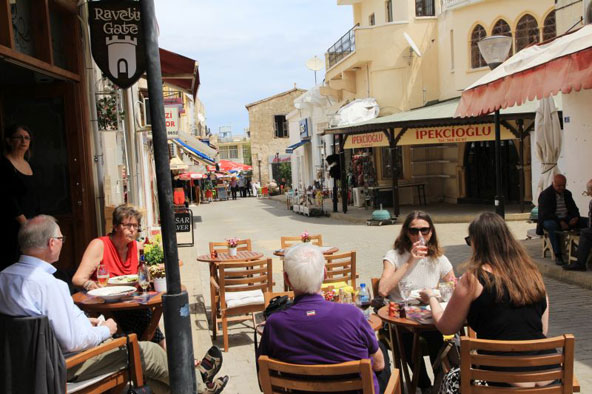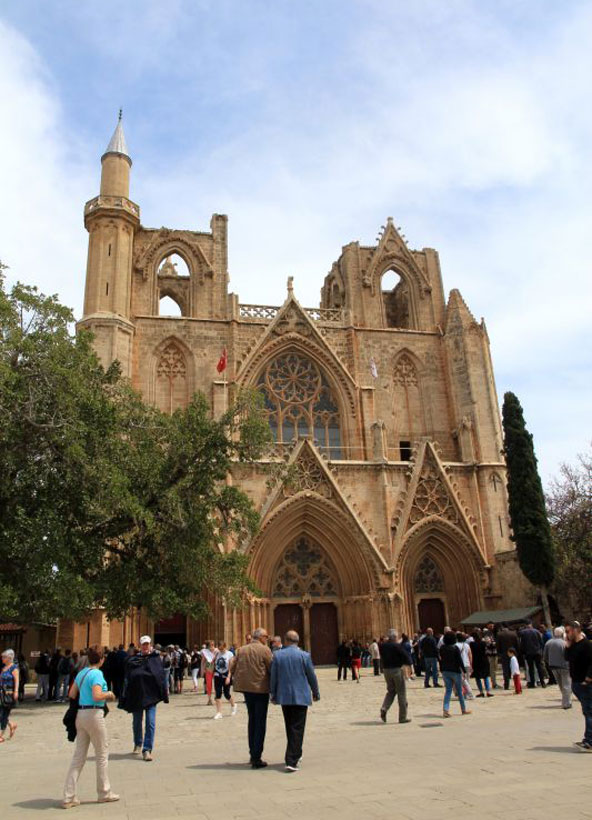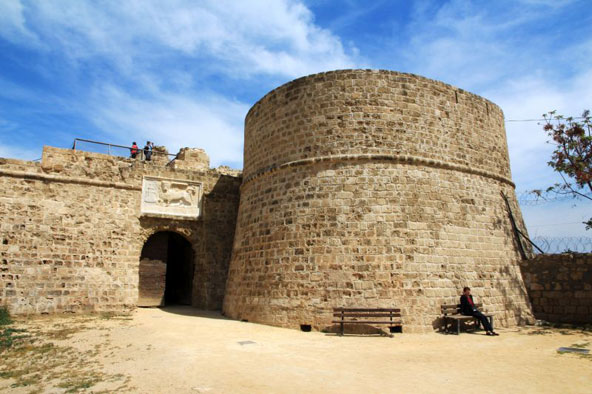Most Recommendable In North Cyprus. Article #1

Famagusta (in Turkish (“Gazimağuşa”) was founded in the 3rd century by the Egyptian king Ptolemy Philadelphus. Here, residents of the surrounding communities fled after the Arab invasion of the island (647 AD).
In Famagusta, they also found refuge in the Crusader knights who fled Acre in 1291 and changed it from a small village
to one of the richest cities of the Christian world in the Middle East.
Famagusta is an hour’s drive from Kyrenia Today Famagusta is a kind of open museum.
Among the city’s mighty walls, which are declared a World Heritage Site, you will find impressive church and cathedral remains, the remains of a Venetian palace and other impressive buildings, which testify to the city’s medieval glory and the Venetian period.

The most impressive building, preserved in its entirety, is St.Nicholas Cathedral (the Lala Mustafa Pasha Mosque), whose construction began in 1298.
The huge cathedral well represents the art of Gothic construction in Para. In the cathedral, the kings of the Louisiana dynasty were crowned kings of Jerusalem,
after being crowned kings of Cyprus in St. Sophia’s Cathedral in Nicosia.
Notice the huge sycamore tree that grows in the square next to the cathedral.

Another important building is the Othello Citadel, which dominates the harbor onto the north of the city.
Above the castle gate is a marble plaque with the lion’s embosment of St.Mark’s- the Venetian symbol.
The castle’s name, Othello, came into use only during the British rule, as a tribute to Shakespeare’s famous play, in which he mentions a port in Cyprus.
If Shakespeare was talking about a port in Cyprus, he should have been referring to the Famagusta Port.
A 10-minute drive from Famagusta is the remains of the city of Salamis. Salamis is the ancient capital of Cyprus since the Assyrian period (7th century BC).
Those who seek the Jewish spot will find it here. After this event, the Romans banned Jews from living in Cyprus.
In the 7th century AD, after the Arabs destroyed Salamis, the city was abandoned. The eldest moved to Famagusta.
Most of the artifacts that are currently visible on the site belong to the Roman period,including the remains of the port, the Gagnion, the theater, the temple of Zeus and the remains of Byzantine churches.
According to Christian tradition, in Salamis, Joseph Halevi of Cyprus,known as Barnabas, was born of the early Christian distributors. A church in Salamis commemorates his memory.
Today, we will visit the impressive city of Famagusta. Famagusta (in Turkish ("Gazimağuşa") was founded in the 3rd century by the Egyptian king Ptolemy Philadelphus. Here, residents of the surrounding communities fled after the Arab invasion of the island (647 AD). In Famagusta, they also found refuge in the Crusader knights who fled Acre in 1291 and changed it from a small village to one of the richest cities of the Christian world in the Middle East. Famagusta is an hour's drive from Kyrenia Today Famagusta is a kind of open museum. Among the city's mighty walls, which are declared a World Heritage Site, you will find impressive church and cathedral remains, the remains of a Venetian palace and other impressive buildings, which testify to the city's medieval glory and the Venetian period.The most impressive building, preserved in its entirety, is St. Nicholas Cathedral (the Lala Mustafa Pasha Mosque), whose construction began in 1298. The huge cathedral well represents the art of Gothic construction in Para. In the cathedral, the kings of the Louisiana dynasty were crowned kings of Jerusalem, after being crowned kings of Cyprus in St. Sophia's Cathedral in Nicosia. Notice the huge sycamore tree that grows in the square next to the cathedral.

Another important building is the Othello Citadel,
which dominates the harbor onto the north of the city.
Above the castle gate is a marble plaque with the lion's embosment of St.Mark's-
the Venetian symbol.
The castle's name, Othello, came into use only during the British rule, as a tribute
to Shakespeare's famous play, in which he mentions a port in Cyprus.
If Shakespeare was talking about a port in Cyprus, he should have been referring to the
Famagusta Port.
A 10-minute drive from Famagusta is the remains of the city of Salamis.
Salamis is the ancient capital of Cyprus since the Assyrian period (7th century BC).
Those who seek the Jewish spot will find it here.
After this event, the Romans banned Jews from living in Cyprus.
In the 7th century AD, after the Arabs destroyed Salamis, the city was abandoned.
The eldest moved to Famagusta.
Most of the artifacts that are currently visible on the site belong to the Roman period,
including the remains of the port, the Gagnion, the theater, the temple of Zeus and the
remains of Byzantine churches.
According to Christian tradition, in Salamis, Joseph Halevi of Cyprus,
known as Barnabas, was born of the early Christian distributors.
A church in Salamis commemorates his memory.


